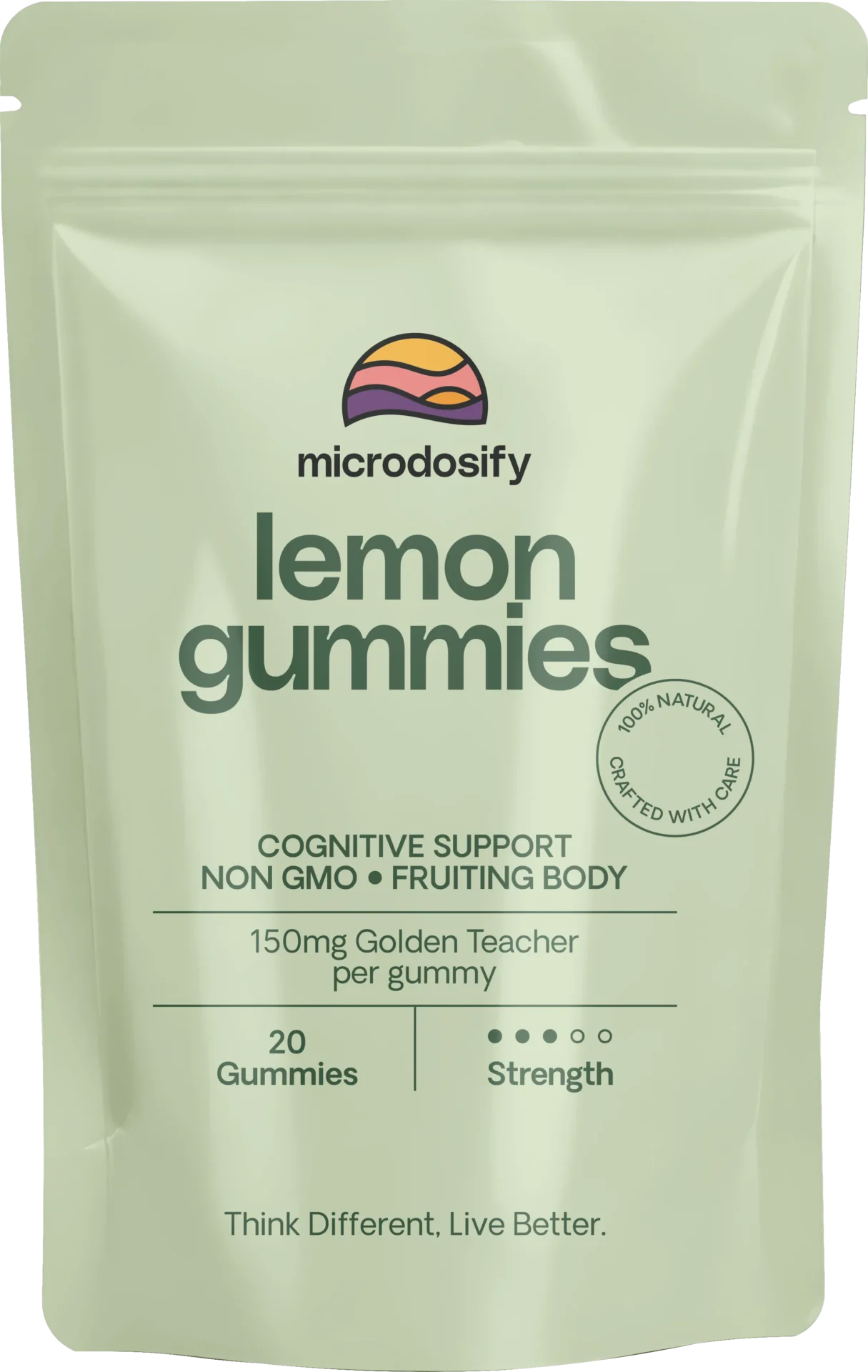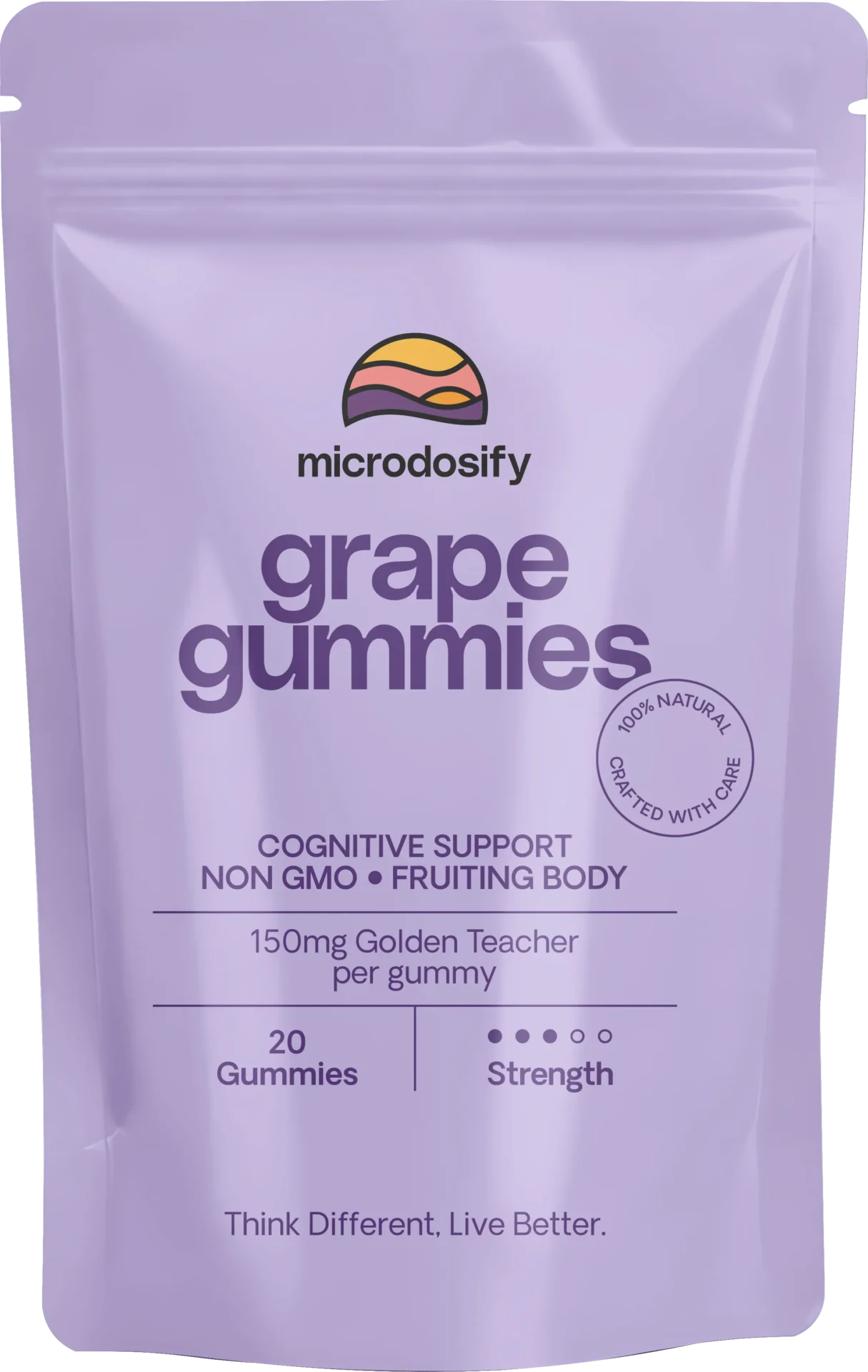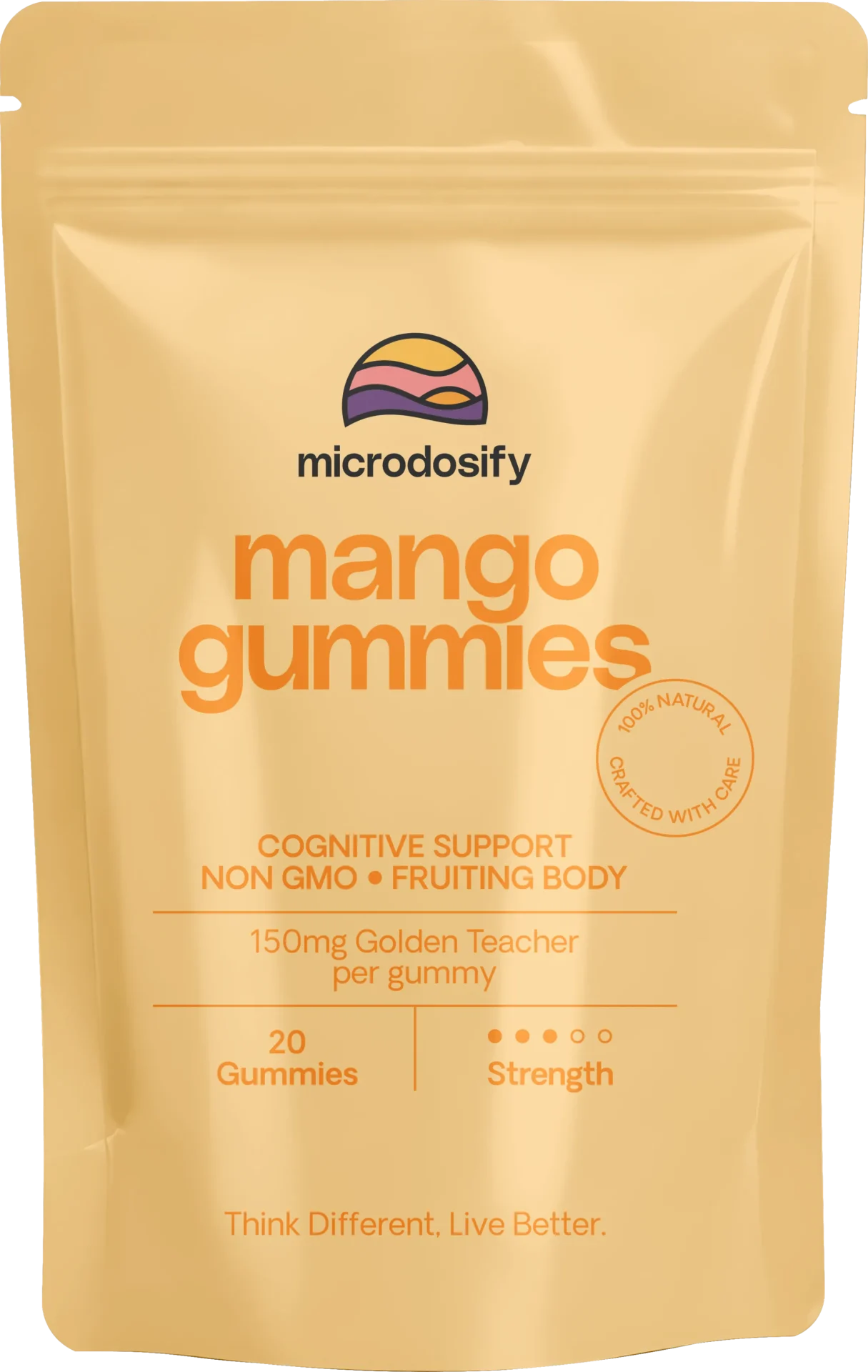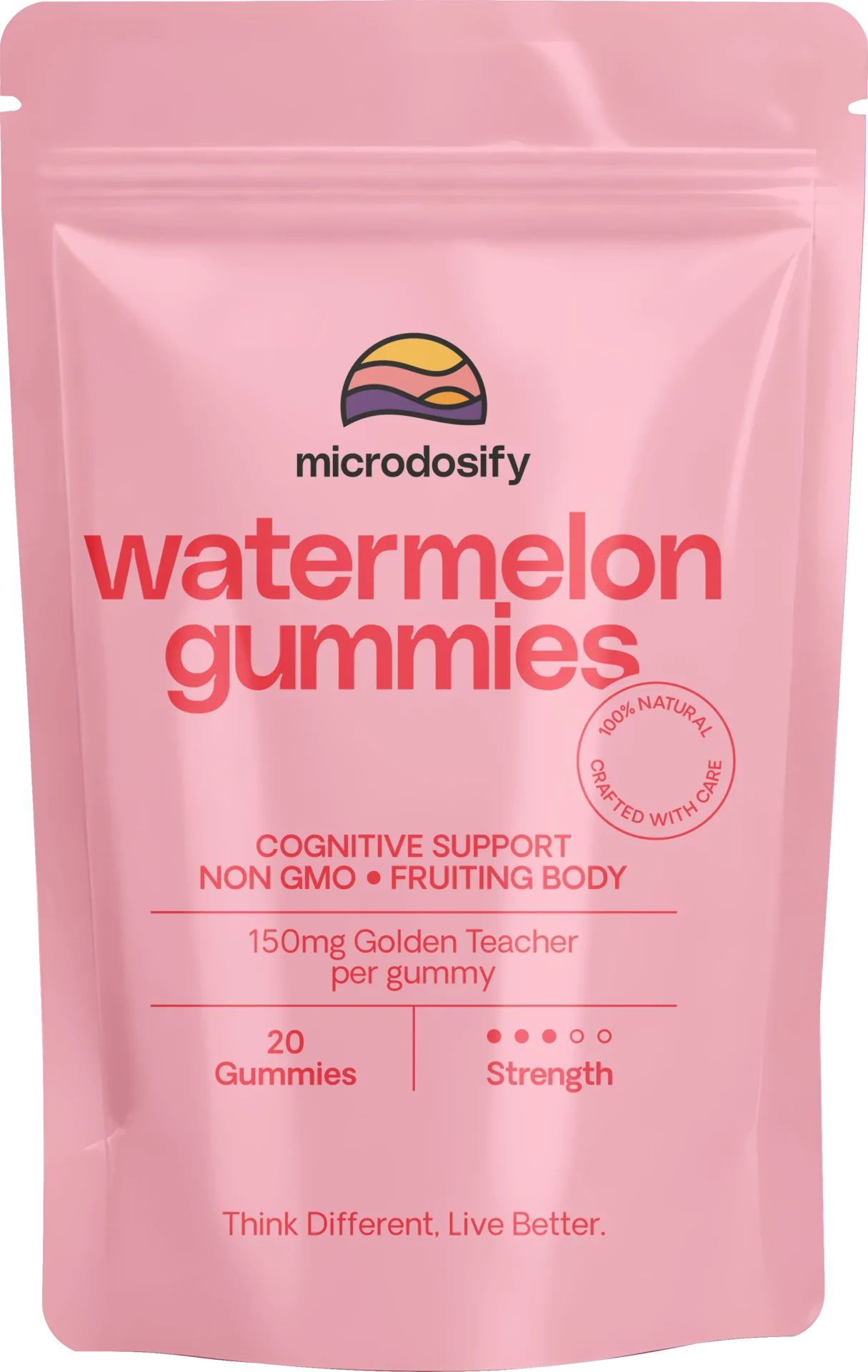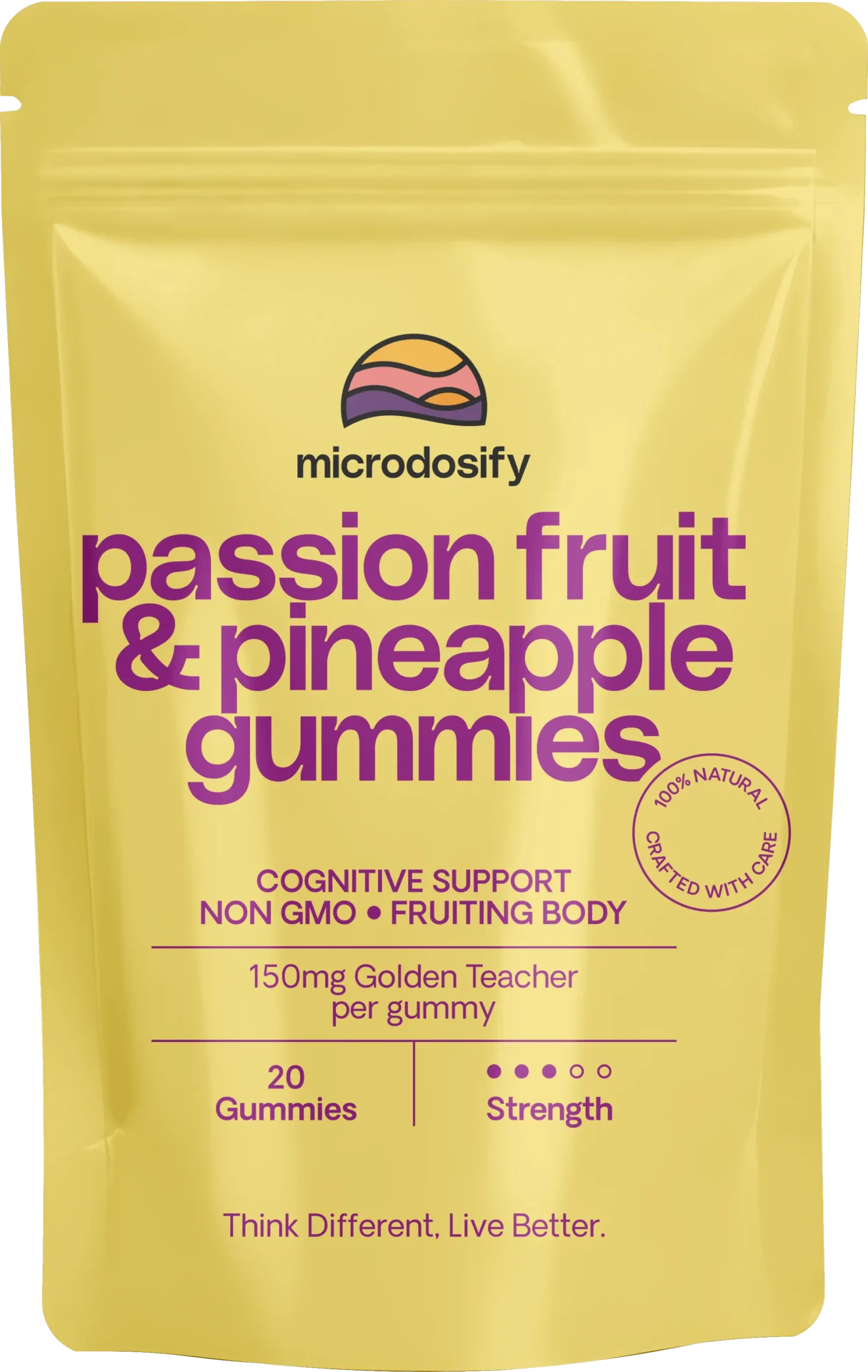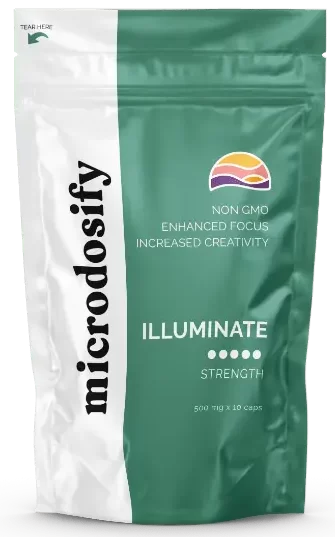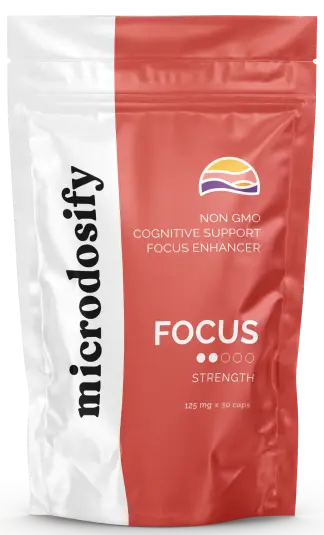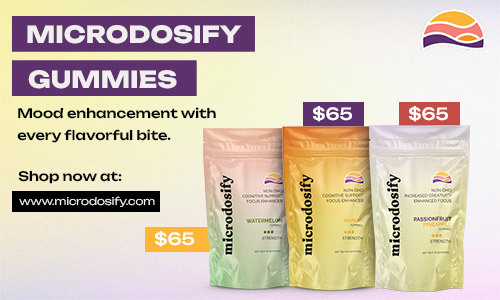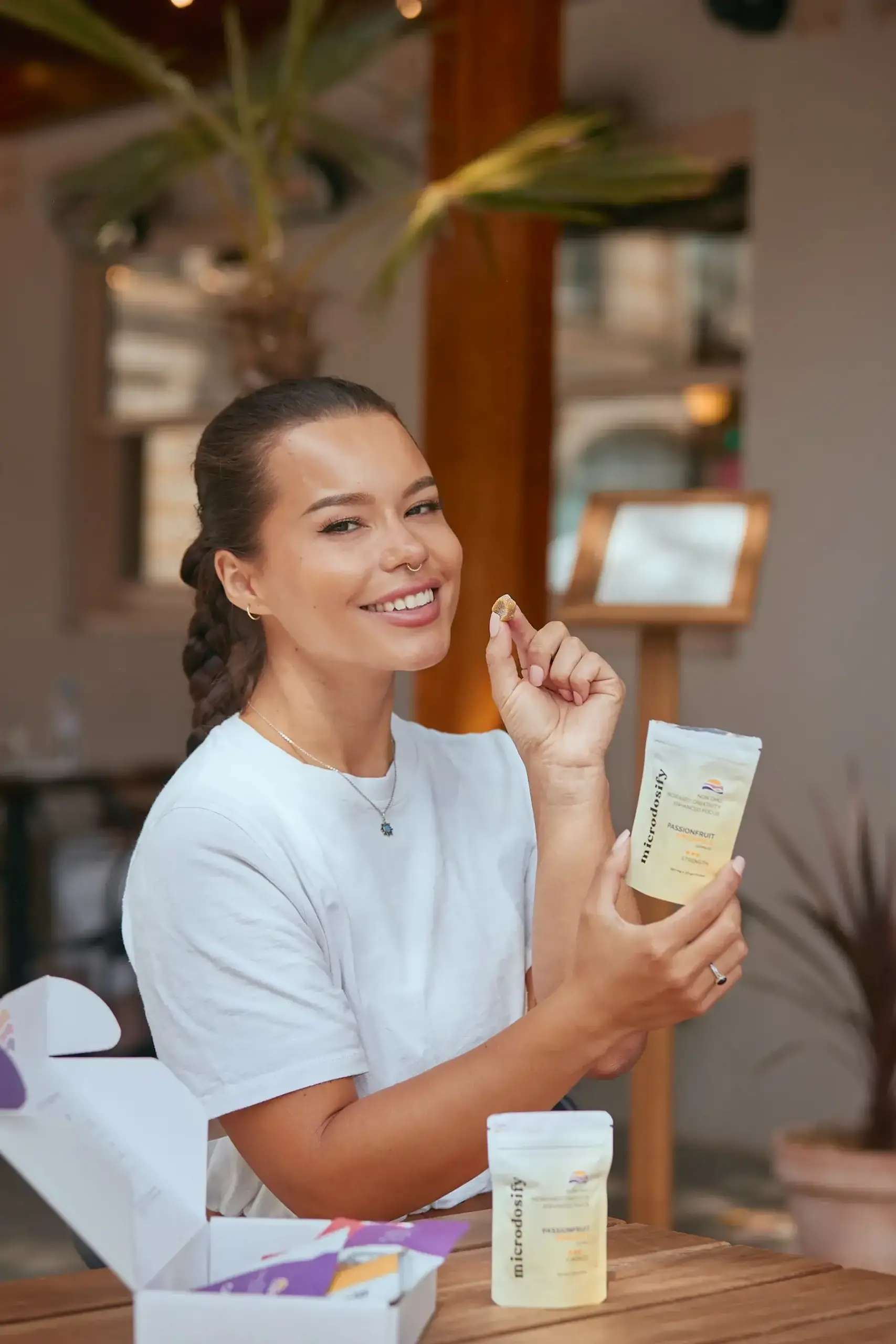Foraging for magic mushrooms is exciting. There’s something cool about finding them in the wild instead of buying them. It feels natural and adventurous. But there’s also a risk—picking the wrong mushroom can make you sick or be completely useless if it’s not the right kind.
The biggest mistake beginners make is misidentifying mushrooms. Some toxic species look almost identical to psilocybin mushrooms, and that’s not a risk worth taking.
In this guide, we will explain how to identify magic mushrooms and where to look for them. If you want to learn more about different types of psilocybin mushrooms, check out our psilocybin mushrooms guide.
Let’s get into it.
What Are Examples of Common Psilocybin Mushrooms?
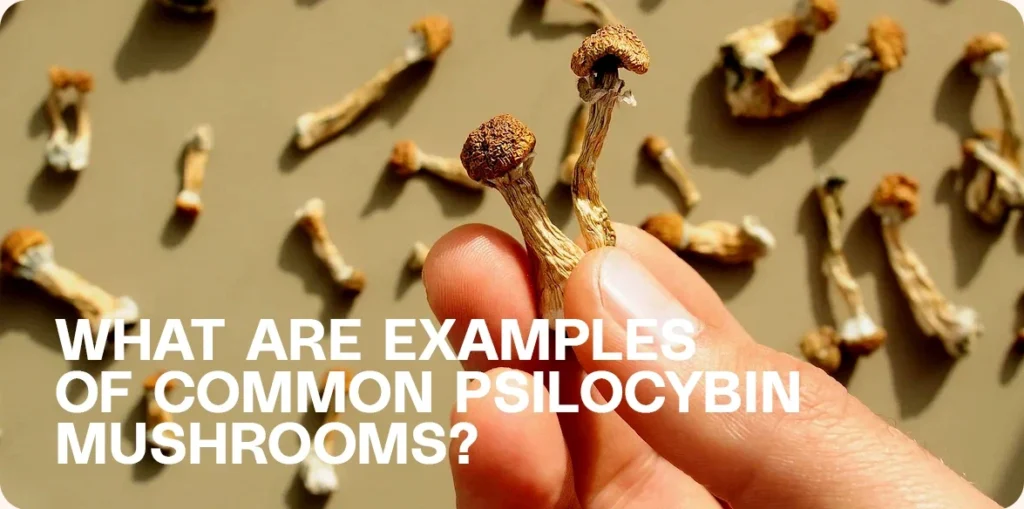
Not all magic mushrooms are the same. Different species grow in different places, have different strengths, and look slightly different. If you’re foraging, it helps to know which ones you’re most likely to find. Here are some of the most common psilocybin mushrooms.
1. Psilocybe Cubensis
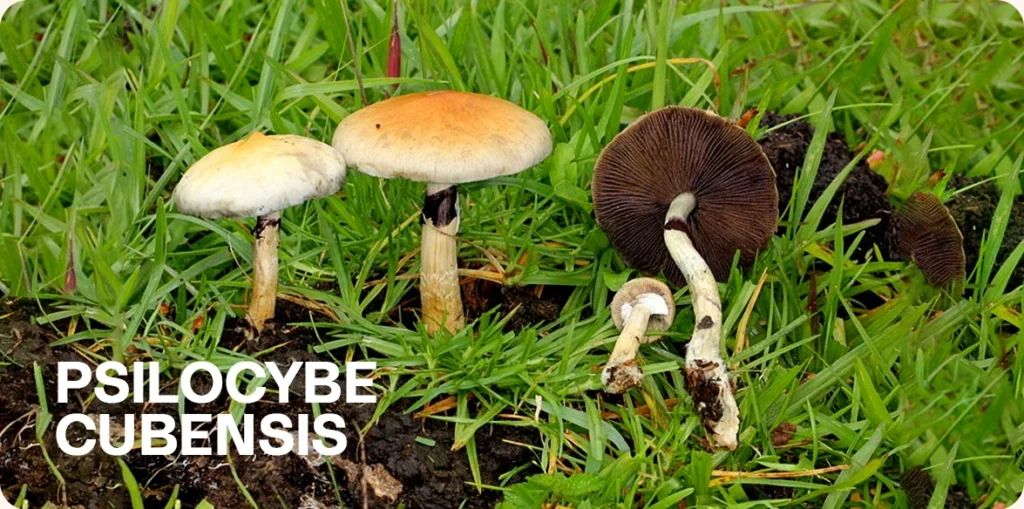
- Where it grows: Warm, humid climates, especially in cow pastures and grassy fields. Common in North America, South America, and Southeast Asia.
- How to identify: Golden-brown cap, white or yellowish stem, and bluish bruising when touched. One of the easiest to recognize and most commonly cultivated.
2. Liberty Caps (Psilocybe Semilanceata)
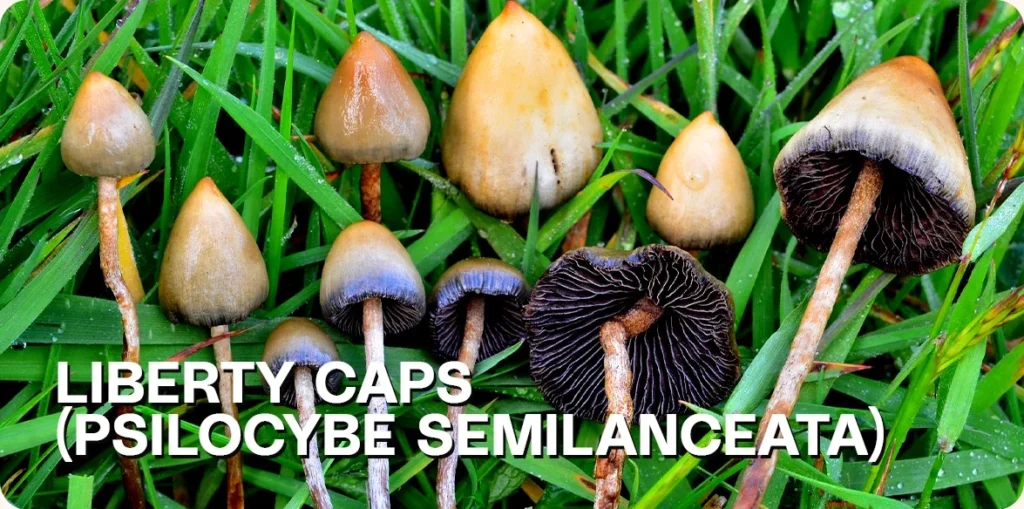
- Where it grows: Cool, wet climates, usually in grassy fields and meadows after heavy rain. Common in Europe, North America, and New Zealand.
- How to identify: Small, pointy, bell-shaped cap with a thin, brownish stem. Does not grow directly on dung but often appears in pastures.
3. Psilocybe Cyanescens (Wavy Caps)
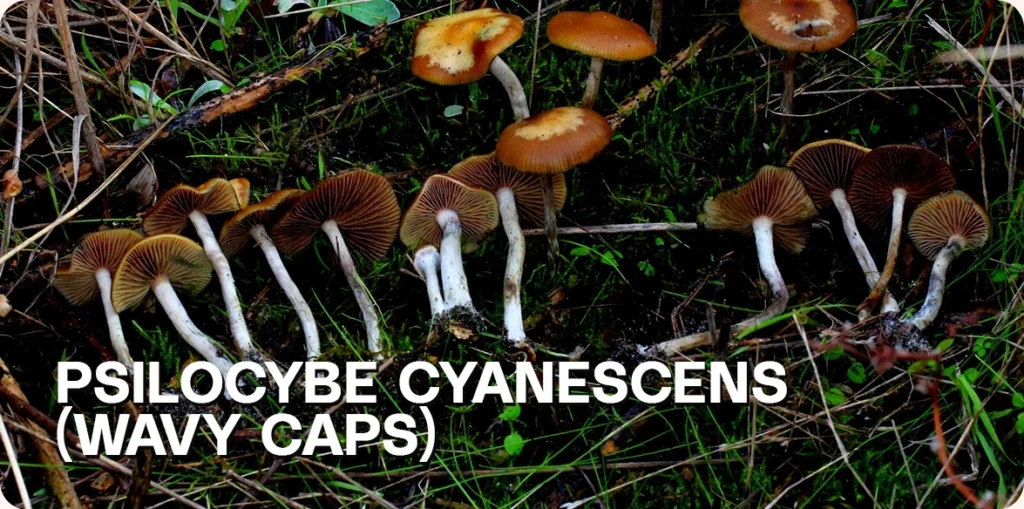
- Where it grows: Mulch, wood chips, and rotting logs, especially in colder regions. Found in the Pacific Northwest, Canada, and Europe.
- How to identify: Wavy, caramel-colored cap, bluish bruising, and strong potency. Often found in urban areas with landscaping mulch.
4. Psilocybe Azurescens
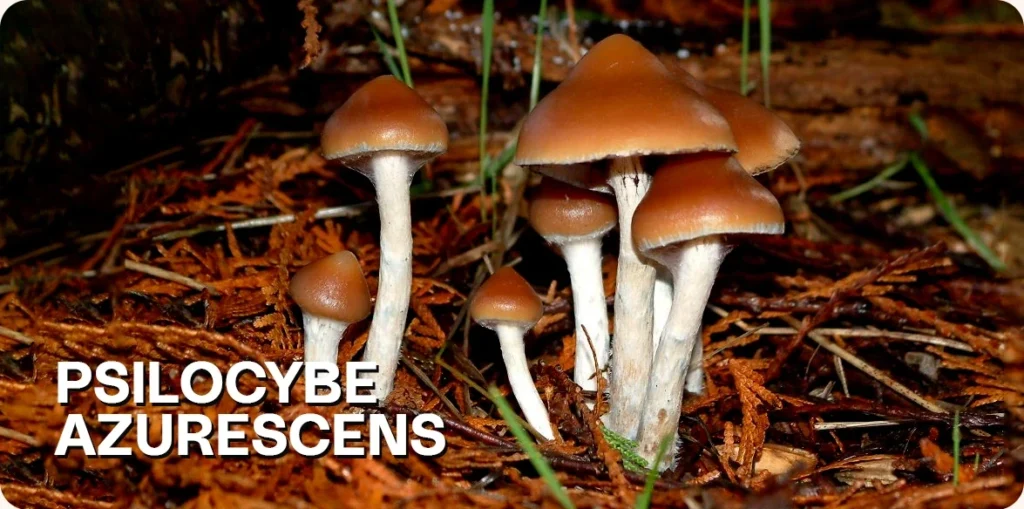
- Where it grows: Coastal areas, especially on rotting wood and dune grasses. Found in the Pacific Northwest, mainly in Oregon and Washington.
- How to identify: Larger than most psilocybin mushrooms, strong bluish bruising, and one of the most potent species.
5. Psilocybe Mexicana
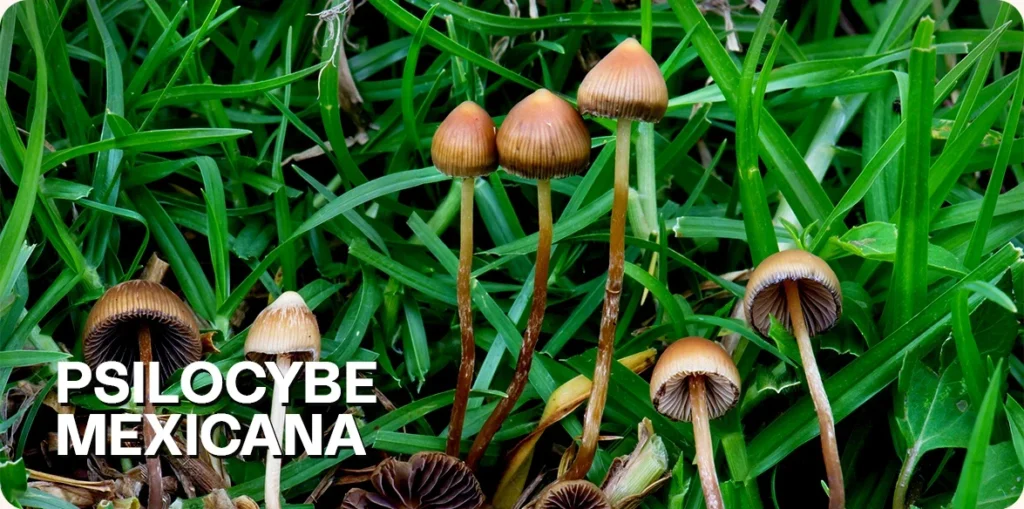
- Where it grows: Warm, humid climates, often in grassy fields. Mostly found in Mexico and Central America.
- How to identify: Small brownish cap, bluish bruising, and long history of traditional use.
Most psilocybin mushrooms grow in humid environments, and bluish bruising is a key indicator that a mushroom contains psilocybin. However, many toxic mushrooms look similar, so proper identification is essential before consuming anything you find.
Key Identification Features
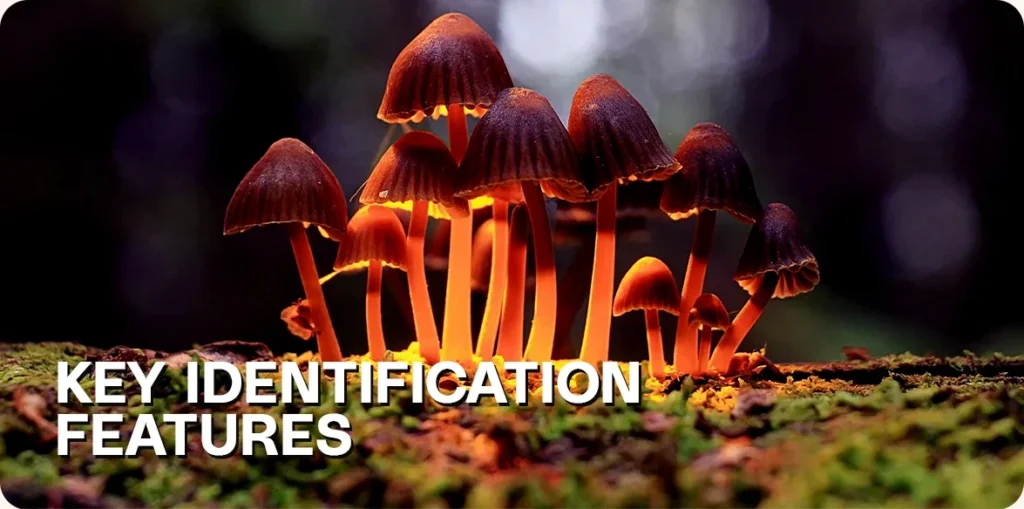
Identifying magic mushrooms in the wild comes down to a few key features. Knowing what to look for can help you avoid picking the wrong mushrooms, especially since many toxic species look similar to psilocybin mushrooms. Here’s how cap shape, color, gill patterns, and spore prints help with identification.
1. Cap Shape and Color
- Magic mushrooms have different cap shapes depending on the species. Some are bell-shaped (Liberty Caps), while others are wavy (Psilocybe Cyanescens) or rounded and smooth (Psilocybe Cubensis).
- The color can range from golden brown to caramel or tan. Most psilocybin mushrooms darken with age and may develop a bluish tint when handled.
2. Gill Patterns
- The gills underneath the cap are dark brown to purplish-black in psilocybin mushrooms. This is a key difference from toxic mushrooms, which often have white or pale-colored gills.
- The gills may be closely packed together and attached to the stem or slightly hanging below it.
3. Spore Prints
- Taking a spore print is one of the best ways to confirm if a mushroom is psilocybin-containing.
- To make one, remove the cap and place it on a white piece of paper with the gills facing down. After a few hours, the spores will leave a print.
- Magic mushrooms always have a purple-brown to black spore print. Toxic lookalikes often have white, rust, or other colored spore prints.
4. Bluish Bruising
- Almost all psilocybin mushrooms are bruised blue when handled or damaged. This happens due to psilocybin oxidizing when exposed to air.
- If a mushroom doesn’t bruise blue or has a different color bruise (like red or brown), it’s likely not a psilocybin mushroom and could be toxic.
By paying attention to these features, you can identify psilocybin mushrooms more accurately. However, always cross-check multiple traits—never rely on just one characteristic to confirm a mushroom is safe.
Safety Guidelines
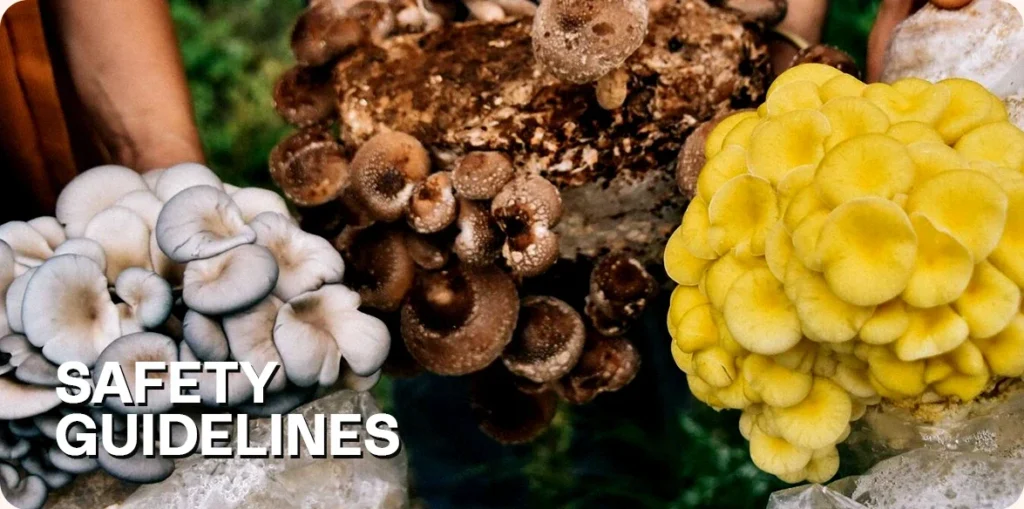
Foraging for magic mushrooms comes with risks, and the biggest one is picking the wrong mushroom. Some toxic mushrooms look almost identical to psilocybin mushrooms, and eating the wrong one can make you seriously sick—or worse. Here’s how to stay safe and avoid legal trouble while foraging.
How Can Users Avoid Toxic Lookalikes?
- Know the key traits – Always check for cap shape, gill color, spore print, and bluish bruising. Psilocybin mushrooms have dark purple-brown spore prints and bruise blue when handled. Many toxic mushrooms have white or rust-colored spore prints and don’t bruise blue.
- Avoid pure white or red mushrooms – While some edible mushrooms have these colors, many highly toxic species do, too. If you’re unsure, leave it alone.
- Compare to verified photos – Use a trusted mushroom identification guide, or compare your find to known psilocybin species. But it’s best to use a guide, like our Golden Teacher Mushrooms Guide.
- Use multiple ID methods – Never rely on just one feature to identify a mushroom. Always check spore prints, gill color, bruising, and cap shape together.
- When in doubt, don’t eat it – If you’re even slightly unsure, don’t take the risk. Some toxic mushrooms can cause severe poisoning or death.
What Are the Legal Considerations for Foraging?
- Laws vary by location – In many places, psilocybin mushrooms are still illegal, even if they grow naturally. Some countries and states allow personal use or decriminalization, but others have strict penalties. Always check your local laws before foraging.
- Possession laws matter – Even if you find magic mushrooms growing in the wild, picking or carrying them might still count as possession, which can have legal consequences.
- Foraging in public areas – Many national parks, forests, and nature reserves have laws against foraging, regardless of what you’re picking. Private land requires permission from the owner.
- Don’t attract attention – If you’re in an area where foraging is allowed but psilocybin mushrooms are still illegal, be discreet and avoid drawing unnecessary attention to yourself.
Foraging can be rewarding, but safety comes first. Knowing how to identify magic mushrooms correctly and understanding the laws in your area can help you avoid dangerous mistakes and legal trouble. Always be 100% sure before picking or consuming any wild mushroom.
Conclusion
Knowing how to correctly identify psilocybin mushrooms and avoid toxic lookalikes is essential. If you’re not entirely sure about a mushroom, it’s better to leave it alone.
The right tools and resources can make foraging safer and easier. A good mushroom identification guide with clear photos helps compare what you find in the wild. Spore print testing is another reliable way to confirm if a mushroom is psilocybin-containing—look for purple-brown to black prints and avoid white or rust-colored ones. While mushroom identification apps can assist, they shouldn’t be your only method of verification.
Learning from experienced foragers or mycology groups is one of the best ways to improve your identification skills. If you’re new to foraging, connecting with people who have real experience can help you avoid mistakes. Lastly, always check local laws before picking mushrooms, as psilocybin is still illegal in many areas, even if found growing naturally.
Safe foraging comes down to knowledge, patience, and the right tools. Take your time, double-check everything, and never consume a mushroom unless you’re absolutely sure it’s safe.



